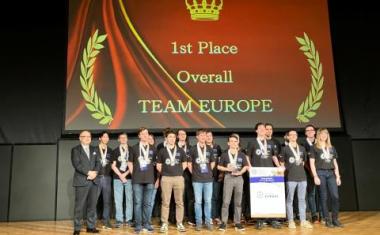ONVIF Publishes Profile G Release Candidate for Video Storage, Recording
ONVIF, the leading global standardization initiative for IP-based physical security products, announced today the Release Candidate for Profile G, the specification designed to sto...
ONVIF, the leading global standardization initiative for IP-based physical security products, announced today the Release Candidate for Profile G, the specification designed to store, search, retrieve and playback media on devices or clients that support recording capabilities and on-board storage. This new Profile is now available for review on the ONVIF website.
As with Profile S, which ONVIF introduced in 2012 as the standard interface to stream video and audio between conformant devices and clients, Profile G now brings video playback into the Profile concept. Having global interface specifications, with specific functionalities easily identified by Profiles, makes it easier for end users, integrators, consultants and manufacturers to harness the opportunities offered by network video technology.
"The introduction of Profile G will complete the circuit between live video and the other half of the equation, which is video storage," said Steven Dillingham, Chairman of ONVIF's Profile G Working Group and Software Engineer for Vidsys. "This further refines the level of interoperability among ONVIF-conformant products," he added.
Profile G will encompass devices ranging from cameras and encoders to networked video recorders (NVR) and client systems such as video management systems, building management systems and physical security information management (PSIM) systems, among others. For example, Profile G can be deployed between a PSIM solution integrating video playback from a NVR, including specific features such as starting and ending recording; searching video using various filters such as time, event or metadata; video retrieval and playback; and, on the receiver side, creating a source of IP media.
ONVIF circulates new Profiles first as a 'Release Candidate' for six months, allowing members and stakeholders a final implementation review. When that process is complete, the final Profile is published and technology providers will be able to test their products for conformance to the final version of Profile G. This process is intended to allow members to more quickly introduce conformant products when the final Profile G is released in early 2014.
Although Profile G and Profile S are related, the two are independent profiles and encompass different functionalities of a network video system. Some devices and most clients may implement both profiles, for example a camera with onboard storage or a digital video recorder. In contrast, a camera may implement Profile S for transmission of the video while an NVR would encompass functionalities from Profile G.
There are currently more than 1,600 products conforming to Profile S in the market from nearly 460 ONVIF member companies. Further information about ONVIF conformant products, including the vendors and the conformant models, is available on ONVIF's website: www.onvif.org.














